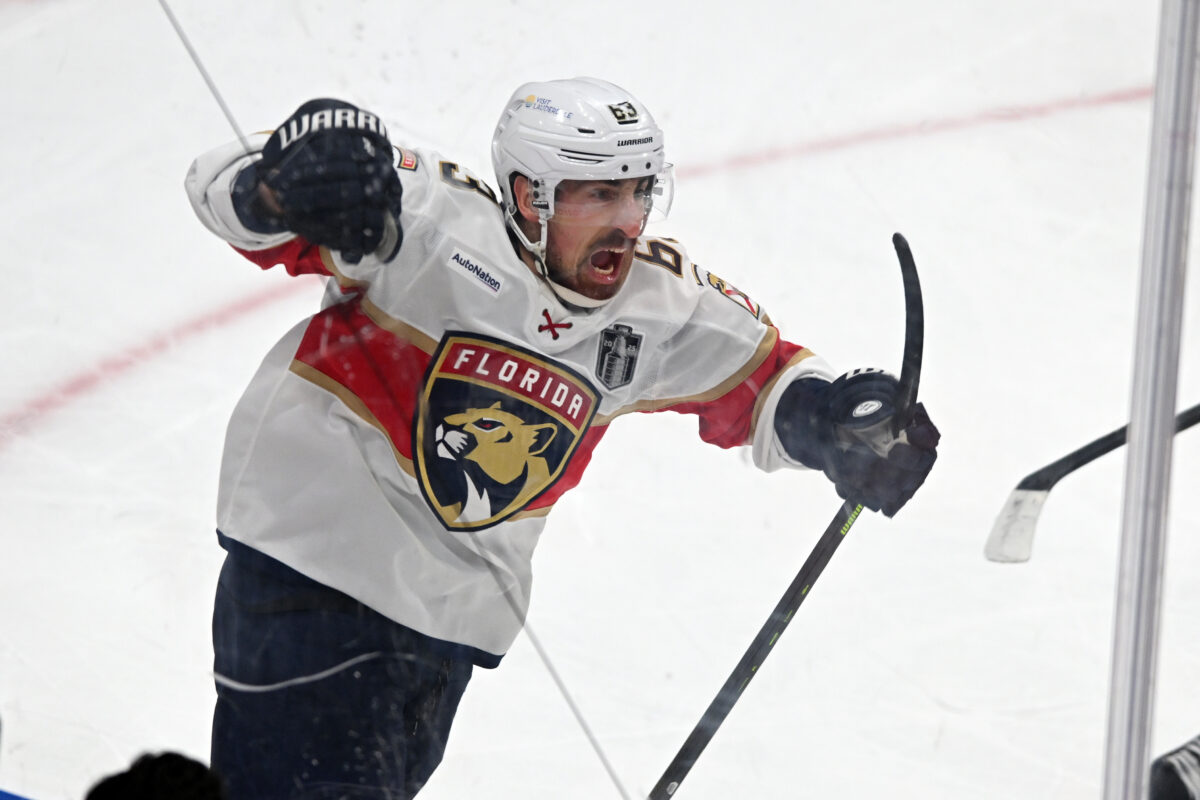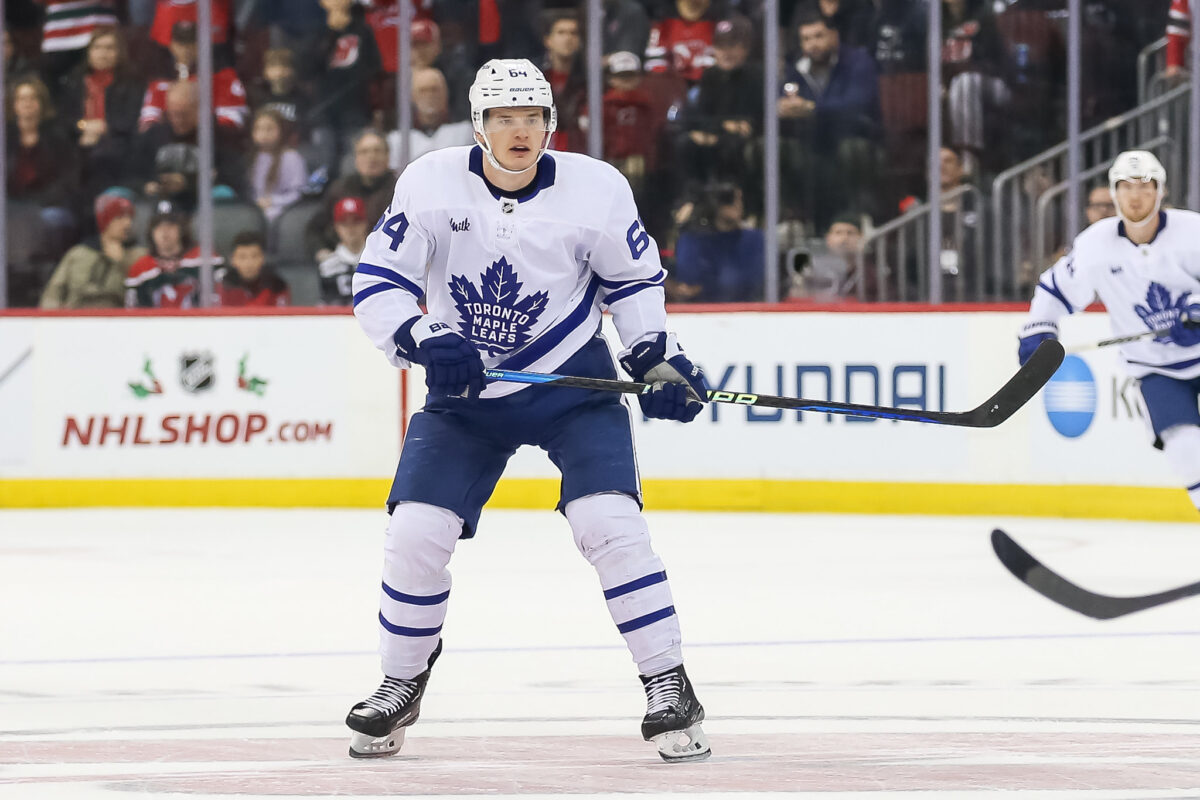As Mitch Marner heads for the exits—so far, quietly and without much fanfare—the Toronto Maple Leafs face a full-blown identity shift. The team, long defined by regular-season flash and playoff frustration, now appears ready to rewire its DNA. With cap space opening up and a clear message from general manager Brad Treliving’s front office, rumours are swirling about what kind of players Toronto will target when free agency opens.
Related: Maple Leafs Address Being ‘Mean’ and Competitive at 2025 NHL Draft
Here’s a rundown of four names being linked to the Maple Leafs and what they might bring—or not bring—to the next chapter in Toronto.
Brad Marchand: The Agitating Answer—Or Aging Gamble?
Reasons For: Brad Marchand is the kind of player you hate—until he’s on your team. Then you start to admire how smart and relentless he is and how often he makes the right play before anyone else sees it coming. Even at 37, he remains a high-skill forward who can drive play, kill penalties, and agitate the opposition into mistakes. His playoff resume speaks for itself, and his leadership in the dressing room has drawn praise from teammates and coaches alike. For a Maple Leafs team looking to change its tone, Marchand brings edge, accountability, and a history of winning.

Mandatory Credit: Walter Tychnowicz-Imagn Images
Reasons Against: The problem is time and money. Marchand’s name still carries weight, but so does the date on his birth certificate. The risk is evident, with a reported price tag of nearly $8 million annually and talk of a four-year deal. Age-related decline can come fast, especially for players who’ve played a hard-nosed style for over a decade. What if the version of Marchand Toronto gets isn’t the one from the Florida Panthers’ 2025 Playoff run but one a step slower, less effective, and increasingly injured? It’s a bold move that could leave the Maple Leafs stuck with another expensive, declining veteran before long.
Pius Suter: Quietly Reliable or Quietly Overpriced?
Reasons For: Pius Suter quietly had a strong season with the Vancouver Canucks, standing out as a steady presence on a team that unravelled late in the year. He can play both center and on the wing, is defensively sound, and brings the kind of two-way consistency head coach Craig Berube will likely value. He’s 29 and still in his prime. He could easily slide into a third-line role. With 20-goal upside and positional flexibility, he offers real depth value.
Related: Tavares Takes Less to Stay: What His New Deal Means for the Maple Leafs’ Future
Reasons Against: The concern with Suter is cost versus impact. He’s likely to command around $4 million per season, but he’s never broken the 40-point barrier in the NHL. That’s a hefty price tag for players who may not move the needle in big moments. He’s bright, safe, and solid—but if Toronto aims to reshape its identity and chase a Cup window, there’s an argument that Suter is more a supporting cast holdover than a driver of change. Still, that might be precisely what the team needs.
Andrew Mangiapane: Underrated Gem or Redundant Fit?
Reasons For: Here’s your Ontario boy with upside. Andrew Mangiapane is fast, physical, and responsible at both ends of the ice. He’s scored 35 goals in a season and could play like someone with something to prove. Before last season’s dip, he was consistently part of the Calgary Flames’ offensive action and always found ways to contribute. He’s a solid two-way player, capable of keeping up with the pace, and could thrive in a third-line role on a team that desperately needs secondary scoring. At $3.5 million, he might be a smart short-term bet—a “see what you can do” contract with real upside. Think budget Michael Bunting, but with a little more finish.

Reasons Against: The biggest question with Mangiapane is whether that 35-goal season was a flash or a ceiling he’ll never hit again. His numbers dipped last year, and he hasn’t quite recaptured his 2021–22 form. He might be a future third-liner—capable but not a game-changer. Also, the Maple Leafs already have several undersized, scrappy wingers. Adding another, even a good one, might not shift the team’s overall profile. Still, he’s never had a minus season in his career, and he’s reliably hit double-digit goals, so if the fit is correct, the risk is relatively low.
Corey Perry: The Wiley Veteran With an Edge
Reasons For: Yes, he’s 40—but Corey Perry keeps showing up when it matters. He’s reached the Stanley Cup Final with four teams and was one of the Edmonton Oilers’ most consistent playoff performers this spring. He brings edge, smarts, and a knack for turning momentum in key moments. On a one-year deal of around $2 million, Perry could replace Ryan Reaves in the lineup while offering real value in the power play, the room, and when the games get heavy. He knows where to be, what to do, and how to lead.
Related: Patrick Marleau’s Lasting Maple Leafs Legacy
Reasons Against: Also, he’s 40. That matters. The decline could come quickly, and Toronto’s track record with aging veterans isn’t inspiring (Joe Thornton, Ryan Reaves, and Wayne Simmonds). Perry’s legs might not match his hockey brain much longer, and if he slows down, there’s no fallback plan. He’s worth a look—but only if the Maple Leafs resist turning nostalgia into strategy.
What’s Next for the Maple Leafs?
With John Tavares and Matthew Knies signed to value contract extensions, the Maple Leafs have bought themselves something rare: salary cap flexibility. The smart path forward might be less about chasing splashy names and more about making clear, disciplined moves. That starts with trimming around the edges.

Toronto’s depth pieces—David Kämpf, Calle Järnkrok, and Ryan Reaves—are probably moving on. Whether through waivers, trades, or quiet exits, the message is clear: it’s time to build a bottom six that can contribute in the postseason. Kämpf has been useful and would likely be claimed if waived, but if not, he’s still a functional piece. Järnkrok brings versatility and might still have value as a trade chip.
As for Reaves, he’s cleared waivers before and likely would again. At this stage, he might be more valuable in a culture-setting role, similar to the one Rich Clune filled with the American Hockey League’s Toronto Marlies.
Related: 3 Maple Leafs’ Free Agent Targets to Improve the Bottom Six
The bigger question is whether the Maple Leafs are ready to back up their promises of change. Saying goodbye to familiar names is never easy, but real change means making real decisions—not just swapping jerseys with the same old identity. Fans should be ready for an interesting free agency, which could be the most honest chapter yet in this new era.
